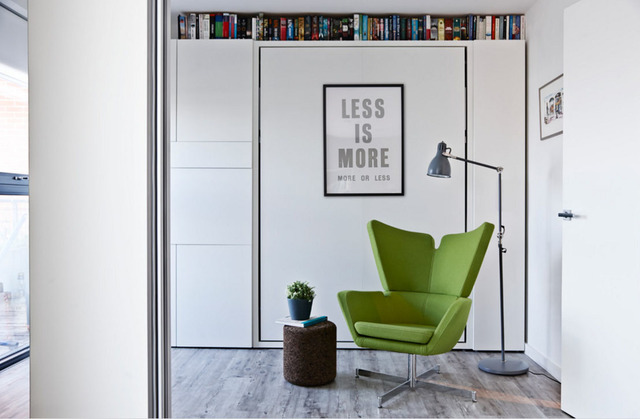Less is more — until it isn’t
“Less is more,” a phrase from the 1855 poem “Andrea del Sarto, called ‘The Faultless Painter’” by Robert Browning. The phrase was adopted by the architect Ludwig Mies van der Rohe (1886-1969), American-German architect, as a precept for minimalist design.
OK, so we’ve heard these words a million times — less is more — often in situations that are not the least bit appropriate. The term is used by professionals such as fashion designers, makeup and hair consultants, weight-loss advocates and nutritionists, and graphic designers.
The term has taken on a life of its own, and you hear it used in many contexts. Today, however, we’re going to talk about it in the context of Mies van der Rohe’s take on design.
Wikipedia describes van der Rohe, “Mies, like many of his post-World War I contemporaries, sought to establish a new architectural style. … He created an influential 20th-century architectural style, stated with extreme clarity and simplicity. His mature buildings made use of modern materials such as industrial steel and plate glass to define interior spaces. He strove toward an architecture with a minimal framework of structural order balanced against the implied freedom of free-flowing open space. He called his buildings ‘skin and bones’ architecture.”
While his take is geared more to architecture, the phrase and the theory behind it is alive and well in the interior design community and used when referring to a myriad of decor subjects. Some feel that a few awesome pieces are more meaningful, appropriate, beautiful or any number of other adjectives than a houseful of them. Uncluttered, clean lines, a lot of visual rest — these ideas are espoused by many designers.
Less is more can mean other things as well. Many designers disagree on this premise (as they do about so many things!) but a few well-placed, appropriate pieces can make a bigger statement as opposed to just filling up a room for the heck of it.
For instance, I’m a collector of a few things. Seriously, only a few! So if I can have many of something I like as opposed to one then I’m happier. Less is not more for me.
Another “less is more” applies to small spaces. We all have vastly different ideas of what should go into a small space. Some say little furniture for a small room. Others, including me, say, no, a few big pieces are the ticket.
In architecture and design, just like Mies, low-slung, contemporary furnishings with few or no accessories are quite popular. Most of us, though, like a little more when it comes to furniture, rug, plants, wall art and accessories.
Art collections, or wall art in general, fights the phrase. One large piece of art or one specifically addressing a subject is considered more than multiple smaller pieces.
An uncovered window with good lines is considered more than covering the window with a treatment. One beautiful tree or plant is considered more than many small ones in the same area.
All of this makes sense I suppose, but it’s just like most other things. In design — whether interior, architectural, landscape, graphic, fashion or whatever — what works for a space or individual is the thing to do. We can’t let others’ opinions or axioms dictate how we decorate or dress or fix our faces.
Less is more sounds good and we know it has a meaningful history, but really, if more is more to you, go for it. You won’t be the first to buck the trend.
Carolyn Muse Grant is a founder and past president of the Architectural &Decorative Arts Society, as well as an interior design consultant/stylist specializing in home staging. Send questions to creativemuse@cox.net.




























